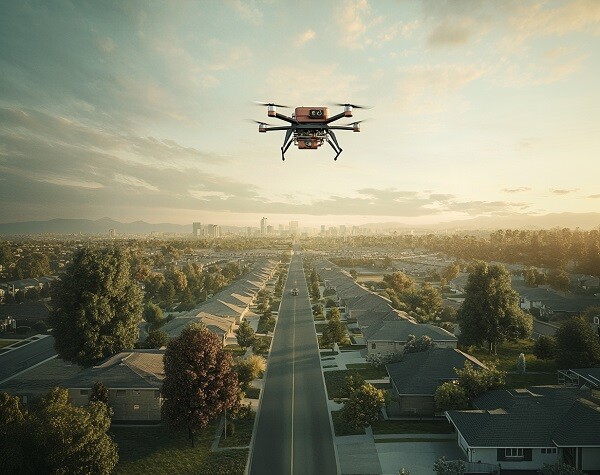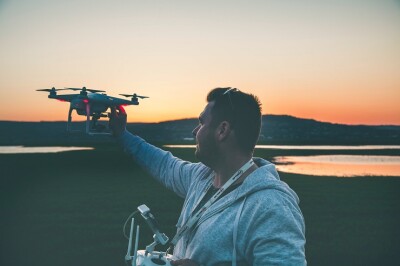As the drone industry prepares for the Commercial UAV Expo on September 3-5, it is perhaps a good time to recap insights from all corners of the commercial drone world. As industry leaders gather in Las Vegas, discussions will likely center not just on technological capabilities, but on how these innovations can be responsibly integrated into our societies and economies.
Drone Market Momentum and Technology Shifts
According to the latest data from Drone Industry Insights, the global drone market is set to reach a staggering US$54.6 billion by 2030, with the commercial segment outpacing overall growth at a 7.7% CAGR. This impressive trajectory is underpinned by a shift in the industry's focus. While drone services currently dominate, accounting for 80% of market activity in 2023, the hardware segment is poised for the fastest growth with a projected 9.3% CAGR. Although this does not suggest that hardware will become the dominant segment by any means, it does show that currently there is high demand for new and more hardware, which will likely also result in more services once the drones are put to use.
The applications driving this growth are as diverse as they are innovative. The use of drones for Mapping and Surveying leads the pack, representing a global market worth US$10 billion in 2023. Meanwhile, the Energy/Utilities sector continues to be the top industry for drone applications, expected to grow from US$4.66 billion to US$7.43 billion by 2030.
Perhaps not surprisingly, the fastest-growing vertical is Cargo, Courier Services, Intralogistics and Warehousing, which includes the often-discussed topic of drone delivery. The drone delivery sector is making significant strides. Companies like Wing, UPS Flight Forward, and Zipline are not just conducting trials; they're establishing operational services in various parts of the world. These advancements are pushing the boundaries of logistics and last-mile delivery, with implications that extend far beyond e-commerce, into areas like medical supply distribution in remote areas.
Global Dynamics and Emerging Trends
Regionally, the commercial drone market is led by Asia, driven by significant markets in China and Japan. However, the ongoing disputes about Chinese drones in the US are likely to have an impact on both domestic US production and Chinese exports. And there is also the crucial factor of commercial drones being used during military conflicts in Ukraine, Gaza, and other parts of the world.
An estimated global total of 7.6 million drone flight hours were recorded 2023. Mathematically, this translates into 20,822 flight hours per day in countries all around the world. However, with great innovation comes great responsibility. As the number of functional drones grows, the need for robust security measures becomes paramount. This is also why the counter-drone market is emerging as a critical component of the industry ecosystem, developing technologies to detect and mitigate unauthorized drone activities.
The industry's growth is not just about numbers; it's about expanding capabilities and applications. Urban Air Mobility, for instance, is no longer a futuristic concept but a rapidly developing sector. Companies are actively developing air taxis and eVTOLs, blurring the lines between drones and personal transportation. This convergence of technologies promises to revolutionize urban landscapes and challenge our very concept of mobility. It also shows how much drones have evolved from small photographic devices to large modes of transportation.
When experts gather in Las Vegas for Commercial UAV Expo, the stage will be set for meaningful discussions and showcases of cutting-edge technologies. The event can serve as a platform to discuss these critical issues, ensuring that the industry balances technological progress with safety and regulatory compliance. This balance will be essential for the continued adoption of drones in various sectors, from construction and energy to logistics and surveillance, and all the way to passenger transportation and the rise of advanced air mobility.
















Comments